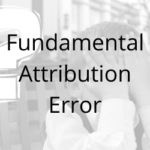Bill of Sale: Definition, Components & Examples

What is a Bill of Sale?
A bill of sale is a legal document used in the sale and purchase of goods, outlining the terms and conditions of the transaction. It typically includes information such as a description of the item, the sale price, the names of the buyer and seller, and the date of the transaction. This document serves not only as a receipt but also can provide important protections for both the buyer and the seller.
Key Points
- A bill of sale is a legal document that records the transfer of ownership of an item or property from one party to another.
- It serves as proof of ownership transfer and provides protection for both the buyer and seller in case of disputes.
- A bill of sale typically includes the names and contact information of the buyer and seller, a description of the item being sold, the sale price or consideration, the date of the sale, and any terms or conditions of the transaction.
Understanding a Bill of Sale
A bill of sale is a written agreement that records the details of a transaction between two parties — a buyer and a seller. The document is specifically designed to evidence the transfer of ownership of an item, typically personal property such as vehicles, boats, or other tangible goods. This agreement serves as a contract of the sale, affirming that the item has indeed changed hands and the seller has received payment for it.
The importance of a bill of sale lies in its role as a formal, legal record of a transaction. It’s an essential document that provides proof of the sale, and it can be useful for various purposes, including:
- Legal Protection: The bill of sale helps protect both the buyer and the seller from potential future disputes over the ownership or terms of the transaction. For instance, if a question arises regarding whether the item was sold “as is” or with a warranty, the bill of sale can help resolve this issue by providing a written record of the terms agreed upon at the time of the sale.
- Tax Purposes: In many jurisdictions, buyers and sellers may need to report the sale for tax purposes. The bill of sale serves as proof of the transaction and provides the necessary details, such as the sale price and date of the transaction.
- Registration and Insurance: For items such as vehicles or boats, a bill of sale is often necessary to register the item or obtain insurance. It demonstrates that the buyer is now the legal owner of the item.
- Record Keeping: it also aids in maintaining accurate records of a company’s or individual’s sales or purchases. This can be particularly important for businesses for inventory management and financial accounting.
Components of a Bill of Sale
While the specific components of a bill of sale can vary depending on the type of item being sold and local laws, the following are the general elements that are typically included:
- Seller’s Information: This includes the full legal name and contact information of the seller. If it’s a business, this would include the business name and address.
- Buyer’s Information: Similar to the seller’s information, this includes the full legal name and contact information of the buyer.
- Description of the Item: Detailed information about the item being sold should be provided. This could include make, model, year, color, size, condition, unique identifiers (like a VIN for vehicles or serial number for electronics), and any other specifics that help identify the item.
- Sale Price: The agreed-upon price that the buyer will pay the seller for the item.
- Date of Sale: The exact date when the transaction takes place.
- Payment Information: Details about the payment method, whether it’s cash, check, credit card, or another form of payment.
- As-Is Statement: A statement that the item is being sold “as is,” if applicable. This means the seller is not providing any warranties for the item, and the buyer is accepting the item in its current condition.
- Signatures: It should be signed by both the buyer and the seller to validate the document. In some cases, the document may need to be notarized.
- Witness Information: Depending on local law, a witness might be required to observe the signing of the document and their information would be included here.
- Odometer Disclosure: For vehicles, an odometer disclosure statement is often required to certify the mileage of the vehicle at the time of sale.
By including these elements, a bill of sale can provide a clear and complete record of the sale transaction. However, it’s important to note that different jurisdictions and different types of sales may require additional components or specific language. As such, it’s often advisable to consult with a legal professional when drafting it.
Types of Bill of Sale
Different types of transactions may require different types of bills of sale. Here are some common types of bills of sale:
1. General
This is a basic bill of sale that details the transfer of personal property of any kind from a seller to a buyer. It can be used for a variety of sales, such as furniture, electronics, or other household goods.
2. Vehicle
This is used specifically for the sale of a vehicle, such as a car, motorcycle, or RV. It typically includes detailed information about the vehicle, including the make, model, year, VIN (Vehicle Identification Number), and odometer reading.
3. Boat
Similar to a vehicle bill of sale, a boat bill of sale is used when selling a boat or other watercraft. It would typically include details like the make, model, year, and HIN (Hull Identification Number).
4. Firearm
This is used for the sale of a firearm. Due to the specific laws and regulations surrounding firearms, a firearm bill of sale often includes more detailed information, such as the make, model, caliber, and serial number of the firearm, as well as the buyer’s identification and certification that they are legally allowed to own a firearm.
5. Livestock
Used in transactions involving animals like cows, goats, sheep, pigs, and horses. It typically includes the description of the animal(s), such as breed, age, color, weight, and any identifying marks or tags.
6. Aircraft
This type of bill is used when selling an airplane or other aircraft. It includes the make, model, year, and serial number of the aircraft, as well as other relevant details.
7. Business
Used when selling a business, this document details the sale of business assets, including tangible and intangible assets. It can be quite complex and usually requires more extensive information about the business.
Remember, each type of bill of sale will have its unique features that are tailored to the specifics of the item being sold, and it’s important to ensure that the correct type of bill of sale is used for each transaction.
How to Create a Bill of Sale
Creating a bill of sale is a relatively straightforward process, though it does require careful attention to detail to ensure that all necessary information is included. Here’s a step-by-step guide:
- Identify the Parties: Begin by listing the full legal names and contact information (including address) of the seller and the buyer.
- Describe the Item: Provide a detailed description of the item being sold. For something like a vehicle or a boat, this might include the make, model, year, color, condition, and VIN or HIN. For smaller items, describe the item as thoroughly as possible to clearly identify it.
- Set the Sale Price: State the agreed-upon price for the item. If any other considerations are part of the transaction (like a trade), be sure to include this as well.
- Specify the Date: Include the date of the transaction. This is usually the day when the buyer takes possession of the item and pays the seller.
- State the Form of Payment: Detail the form of payment, whether it’s cash, check, money order, or another form. If payment will be made in installments, this should also be clearly indicated and detailed.
- Include an “As Is” Clause (If Applicable): If the item is being sold “as is” — meaning the seller is not offering any warranties as to the item’s condition — this should be stated explicitly.
- Sign and Date the Document: Both the buyer and the seller should sign and date the bill of sale. Depending on local laws, you may also need to get the document notarized.
- Keep Copies: Both the buyer and the seller should keep a copy of the bill of sale. This serves as a receipt for both parties and can be used as proof of the transaction if necessary.
Remember, laws regarding bills of sale can vary from place to place, so it’s a good idea to check with a local authority or legal professional to make sure you comply with all local laws and regulations.
Examples of a Bill of Sale
1. Vehicle
Let’s say John Doe is selling his 2015 Honda Civic to Jane Smith for $10,000. The bill of sale might look something like this:
VEHICLE BILL OF SALE
I, John Doe (Seller), residing at 123 Main Street, Anytown, Anystate, sell to Jane Smith (Buyer), residing at 456 Elm Street, Anytown, Anystate, a 2015 Honda Civic (VIN: 1234567890), color red, with an odometer reading of 45,000 miles.
The vehicle is sold for the total amount of $10,000, payable by check. Payment is to be made in full at the time of sale.
The vehicle is sold "as is," without any warranties as to its condition.
Seller:
Signature: ___________
Date: ___________
Buyer:
Signature: ___________
Date: ___________
2. General Bill of Sale
If Sally Johnson is selling a painting to Bob Williams for $200, the bill of sale might look something like this:
GENERAL BILL OF SALE
I, Sally Johnson (Seller), residing at 123 Main Street, Anytown, Anystate, sell to Bob Williams (Buyer), residing at 456 Elm Street, Anytown, Anystate, a painting described as "Landscape at Sunset" by Artist Unknown, approximately 24" x 36", framed in gold.
The painting is sold for the total amount of $200, payable in cash. Payment is to be made in full at the time of sale.
The painting is sold "as is," without any warranties as to its condition.
Seller:
Signature: ___________
Date: ___________
Buyer:
Signature: ___________
Date: ___________
Please note that these examples are very basic and for illustrative purposes only. Depending on the specifics of your transaction and your local laws, you may need to include additional information. As always, it’s a good idea to consult with a legal professional to ensure you’re fully compliant with all relevant laws and regulations.
FAQs
A bill of sale is a legal document that records the transfer of ownership of an item or property from one party to another.
A bill of sale usually includes details such as the names and contact information of the buyer and seller, a description of the item being sold, the sale price or consideration, the date of the sale, and any terms or conditions of the transaction.
The requirements for a bill of sale vary by jurisdiction and the nature of the transaction. In some cases, a bill of sale is legally required, such as for the sale of motor vehicles or boats. However, even when not legally required, a bill of sale is often recommended to provide documentation and evidence of the transaction.
A bill of sale serves as proof of ownership transfer and provides protection for both the buyer and seller. It can help resolve any disputes or disagreements that may arise regarding the sale or ownership of the item.
About Paul
Paul Boyce is an economics editor with over 10 years experience in the industry. Currently working as a consultant within the financial services sector, Paul is the CEO and chief editor of BoyceWire. He has written publications for FEE, the Mises Institute, and many others.

Further Reading
 Circular Flow Model - The circular flow model is a simplified representation of how money, goods, and services flow through the economy between households…
Circular Flow Model - The circular flow model is a simplified representation of how money, goods, and services flow through the economy between households…  Bait and Switch - Bait and switch is a deceptive sales tactic that involves advertising a desirable product or offer to attract customers, only…
Bait and Switch - Bait and switch is a deceptive sales tactic that involves advertising a desirable product or offer to attract customers, only…  Fundamental Attribution Error: (What it is & 3 Examples) - The fundamental attribution error is where we think the cause of an individuals action is because of their personality. However,…
Fundamental Attribution Error: (What it is & 3 Examples) - The fundamental attribution error is where we think the cause of an individuals action is because of their personality. However,… 